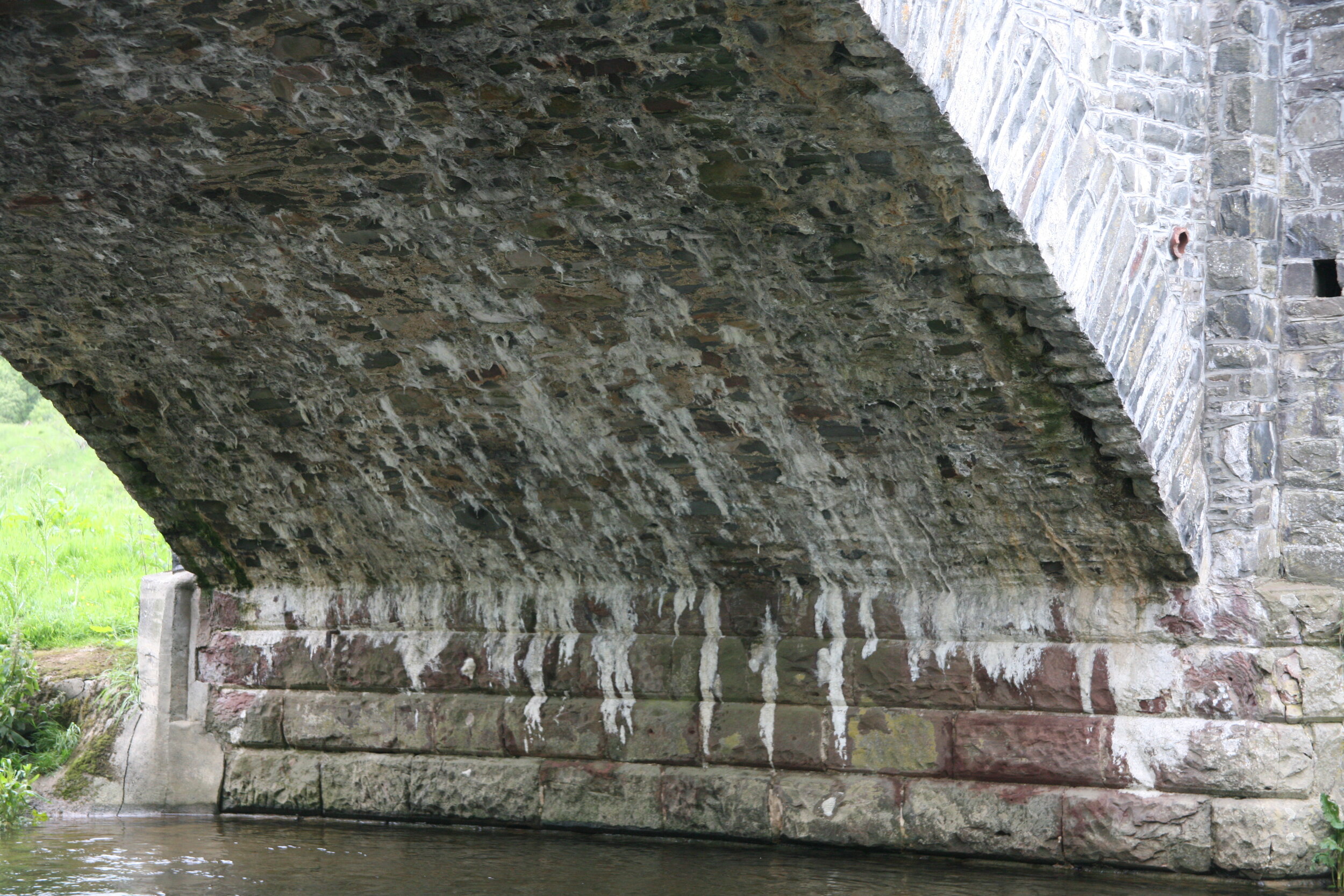I had some dealings at a distance with Bowland back in my Dundee days then had cause to visit and look closely in 2012. These pictures cropped up recently and I thought I should go back through them. It crosses the Gala water close beside the A7.
It’s a fine bridge: notable for being built entirely from selected rather than dressed stone. As I remember it has internal spandrel walls.
I think that, in both of these pictures, it’s possible to see a side sway. The road rises from flood plain level to the right (east) on to a river terrace to the west and the lop-sided weight has surely caused the arch to creep. Aided, no doubt, by the high mortar content.
The side spans, or strictly flood spans, are interesting for being different radii, partly to accommodate the sloping road.
This shot from below barely shows the soffit but provides an opportunity to shout out for Affinity Photo which has amazing powers of enhancement. See below achieved in three keystrokes.
That point is made because there is no excuse for putting black pictures into reports in 2020 as people still often do.
Here we can see how low the springing is set on the main span. If anything, it is slightly below the surrounding ground.
Once you zoom in, of course, the light balances better and the picture doesn’t need to be pushed. We can be pretty sure from here that the long stones were chosen for the edges and the remainder of the arch is built up with smaller stones and a lot of mortar. Almost a concrete arch, in fact.
This is a side span. Interesting how it is dark in the middle and paler at the edges.
This shot makes the difference in level of the main span and side span springings very clear.
The “keystone” is actually only stuck on but at least gives us a date. That mortar looks awfully like cement, hope it doesn’t cause too much trouble.
Here, around the quarter point there is a nice view of the stonework in the ring.
Here is one of the flatter side spans.
Some of the masonry contains remarkably small stones.
And in places, the repointing just got out of hand.
The reason for my involvement was a need to raise the weight limit during the reconstruction of the Borders Railway. As a result, I also got a copy of this photo of the internal construction.
Internal spandrel walls topped with rough stone prisms
I hadn’t come across internal walls on a bridge built of rubble before. I have thought often about the way the walls seem to lean in a little. It hadn’t occurred to me till now that they might have been deliberately corbelled to reduce the effective span of the slabs above.















